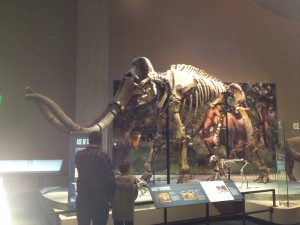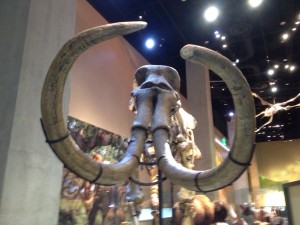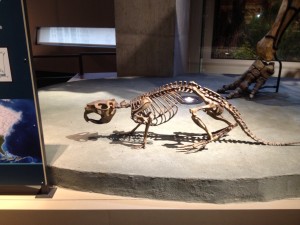Mimsy Twinsy of the Furrulous Fimsy Clan of pottery mice lived in the China Cabinet Land with her five mice children, Cal-Pepper, Dorothy, Prospero, Fred and Ahh-choo. Porcelain by day, when the sun set and the night arrived, she and kids scampered and darted about the shelves of their cabinet confines and conversed with their friends. Still and unmoving when the Bigs picked and placed them during the bright sun hours, the quick black eyes of Mimsy Twinsy never shut. She did not miss a thing. She knew their place and she was teaching her children what it meant to be a Fimsy of the Furrulous Fimsy Clan.
“Mommy, what was that sound?” Cal-Pepper asked. That boy, like Mom, did not miss a thing.
“Hold down the squeak, young un and don’t twitch n ear. See the Big Little Girl there. She just dropped an angel.”
“I see, Momski,” Cal-Pepper, the eldest of the mice children, confirmed. “That angel is Blondies-Smilies. Her head isn’t no more top her wings. No morski, by scratchy.”
Mother mouse and son watched the Big Little Girl as she held the headless angel statue, a sad frown pulling the Girl’s head down.
“Clomp, Clomp, Clomp,” sounded from the upstairs stairs. A Big Man turned the corner and stopped. Seeing the broken statue in the Little Girl’s hands, the Man walked quietly forward, knelt and talked in a low tone to the Girl.
“Wasser doers herers, Kaoleekapopers?” he said softly. “Not skittle gotta corner gummier bears not a bitsy. Youse got the okies for suries. Looksie seeie hereie. Findie windie surie certalookaboutcow. Nop worry ka now til when.”
Ahh-choo sneezed and wiped her nose with a paw. “Mawwy, what are dem words he bee saying?” Sniffle.
Few of the creatures in China Cabinet Land could understand Big People speech. Fimsy was taught how to hear the words by her Dad, King Gateway Got-A-Nose. King Gateway had been known by one and all as “Nosey,” before a recent accident had taken his quite prominent proboscis. Now, the King was home for repair with a plastered cast on his face and a tube of special oint-gluey beside him as he rested. King Gateway’s favorite nickname was in jeopardy. Until the bandages could be removed and the King’s nominative evaluated, Mimsy Twimsy Fimsy was in charge.
“That be one good Big Guy, you can betya yur paint jobs on it,” Mimsy the Fimsy explained. “He nev made the big screechers at the Little Girl. He told her it was okay the dookey. They be just needen to fix that head.”
“But, Mommy, they can’t find that head,” Dorothy, the oldest girl, said between sobs.
The family watched as the Big Man and Little Girl searched the floor on their hands and knees for the missing top. Finally, the Man stood, picked up the Girl and moved to the downstairs stairs.
Some minutes later the Man returned. Stopping by the up stairs, the Big Man glanced over at the china cabinet and smiled at the motionless porcelain figures. Turning, he clicked the light off and clomped up the stairs.
A strange smile lit Mimsy’s face and she nodded her head.
“Prospero, my reliable little mousey, summon the great Puddleduck to our counsel.”
“Yes, Ma’am the Mom.” Prospero, the middle son, saluted, about-faced in brisk military fashion and returned quickly with the quacksome and bonneted large duck who had, it seems, already been on the way to join them.
“Quack. Time for tea, Mimsy?” The great Puddleduck always wished for tea and she was dressed for her favorite sport, which was consuming the cakes and cookies of a famous Fimsy tea time.
“A mission first, my fine winged flying friend. I promise ya a spread of treats replete on yur return.”
Mimsy fixed her gaze on Fred, her youngest and most agile son. “Frederick, quick of hands, can you pick the lock on this cabinet?”
Fred double saluted, to Prospero’s chagrin — Fred was always doing the one-upper. “In a second halved in halve again, my captain in the charge Mom.”
“Excellent,” Mimsy smiled. “You, Fred, will go on the flight, find and fix with Ms. Puddleduck. Before you fly, grab that tube of glue next to dear old Grand-dad in his bed.”
Mimsy addressed her oldest son, whose nose was stuck to the glass.
“Cal-Pepper, my long-sighted micey, have you spied the missing topendage?”
“Yes, Mommy. I see the curls of that angel girl’s head. Over yonder behind the leg of the big slider chair. It went far. That’s why they couldn’t find her topper.”
“Good lad, Callie.”
Mimsy patted the hungry duck’s wing. “Do you see the lil pumpkin head, Ms. Puddle?” The large duck dipped her beak “Yes” in the direction of the displaced top part.
“Good.” Mimsy spun round to her oldest daughter. “Now, Dorothy, the one who knows where things are hidden, run and find some heavy thread for Fred.”
Mimsy stepped in front of her youngest son. “You have a big job, Fred, my lightest and quickest. Take the gluey and thread. Fly with Ma’amsy Puddleduck. Load up the topper and hold on to Puddley tight until you land in manger land. Help Blondie. She’ll hold her head while you squirts da gluey. Don’t get it on her prettsie white dress. Tell er not to move fer 10 seconds. You knows. One little mousie, two little mousie. . . . Counts em out, all the way to 10.”
Mimsy lifted her head to her middle son. “Prospero, you have the door. Make sure it’s open for the return flight. I know we can count on you.”
Prospero triple saluted.
Mimsy Twinsy Fimsy touched the shoulder of her girls, the older Dorothy and the baby Ahh-choo, and looked into their faces. “We have a very important job,” she said to the girls. “We will fix the tea and it will be the grandest of grandiest evers and a yet, with triple cakes and cookies for our dear friend, the Puddleduck, when she returns with Fred from their mission.”
Mimsy threw her arms wide.
“Now, off with all of you to your jobs and tasks and adventures of many and merry.”
With a scurry, flurry and fly, they all to their tasks did take.
* * *
Raising her head from testing a hot scone, Mimsy spied a wave and smile from an angelic blond head across the room and watched the swoosh and tilt of a happy duck on her way home with Flying Fred, of the new name, beaming atop the feathered back as Prospero with Cal-Pepper’s help propped open the door and Dorothy and Little Ahh-choo set out the tea things.
* * *
And . . . what do you think happened the next morning when the Little Girl and the Big Man found that pretty blond angel with her head attached?
You know, I’m looking at that angel right now and I can’t see a crack.
The End
Grandpa Jim



